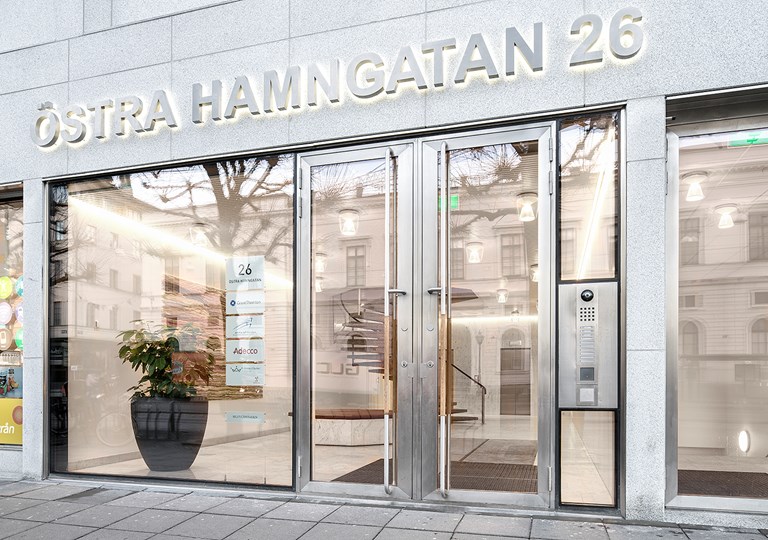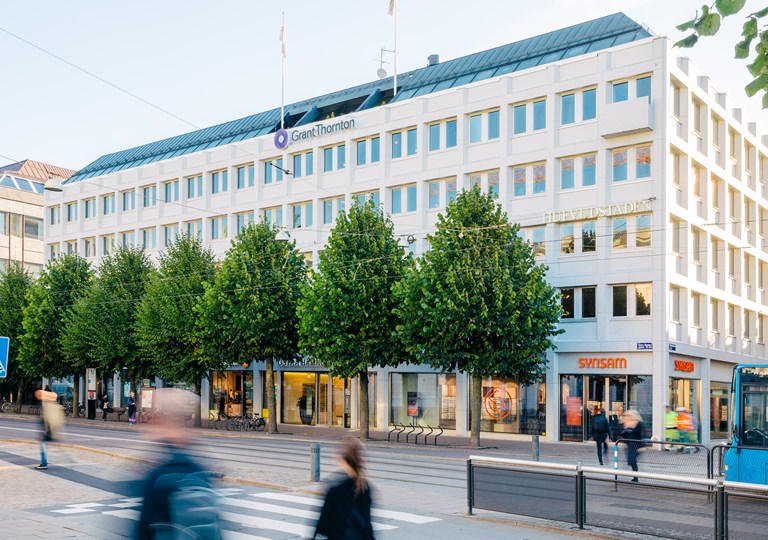
Valuation method
Valuation of the property holdings is carried out by assessing the fair value of each individual property. The assessment took place in the form of a valuation according to a variation of the location price method, known as the net capitalisation method. The method involves setting the market yield requirements in relation to the net operating income of the properties. In the case of other project properties and undeveloped land, the value is determined based on weighing up the location price method and a development calculation where the net capitalisation method is used for a completed property with a deduction for construction costs, a profit for the developer that is in line with the market, as well as financial expenses and rental vacancy costs during the construction period.
Yield requirements
The assessment of the yield requirements is based on information compiled about the market’s yield requirements for purchases and sales of comparable properties in similar locations. If few or no deals have been concluded in the property’s sub-area, transactions in the adjoining areas are analysed. Transactions not yet concluded also provide guidance on the market yield requirements. Account is also taken of the property type, technical standard, building construction and major investment requirements. The yield requirements used in the valuation vary between different regions and different sub-areas within the regions. Information is assured with independent valuation and advisory companies. The assessment is that the market is active based on transactions completed and ongoing transaction processes, and the valuation model is therefore considered applicable.
Hufvudstaden’s average yield requirement since December 31, 2020 has varied between 3.5 per cent to 4.2 per cent, and as of December 31, 2024 the figure was 4.1 per cent. For leasehold properties, the calculation is based on a yield requirement that is 0.20 percentage points higher than for equivalent properties where the land is freehold.
The net operating income
The net operating income is based on market rent revenue. Rent revenue is adapted to the market by adjusting existing rents using newly signed and renegotiated leases and with account taken of the expected rent trend.
Revenue has been reduced by assessing a long-term rental vacancy rate. The vacancy rate is based on the true outcome of the property holdings over a business cycle, and the expected rental situation for the individual property. In the valuation, an average vacancy rate of 4 per cent has been estimated. The actual average vacancy rate excluding projects between 2015–2024 varied between 1 and 7 per cent, and as of December 31, 2024, the figure was 5.0 per cent.
A deduction is made for standard costs for operation and maintenance, excluding costs that can be passed on, and part of the property administration. These are based on the actual outcome and are adjusted for non-permanent deviations. The average cost per square metre over the most recent five-year period has been in the range of SEK 575–675, and the estimated cost in the valuation as at December 31, 2024 was on the same level.
The building cost is based on standard information as well as information reported in current leasehold cases with an upward adjustment in line with an assumed cost trend. In addition, a deduction is made for profit requirements for the developer in line with market conditions, financing costs and the loss of rent revenue on vacant space that arose during the construction period.
| Range (weighted average) | |
| Net operating income (SEK/sq m) | 2,650 - 9,140 (5,390) |
| Vacancy rate (%) | 2 - 5 (4) |
| Yield requirement, Stockholm (%) | 3.7 - 4.2 (3.9) |
| Yield requirement, Gothenburg (%) | 4.7 - 5.0 (4.9) |
| Yield requirement, total (%) | 4.1 |
External valuation
To assure the quality of the valuation, external valuations were obtained from three independent valuation companies: Cushman & Wakefield, Forum Fastighetsekonomi and Newsec Advice. The external valuations on December 31, 2024 comprised nine properties and were equivalent to 39 per cent of the internally assessed fair value. The corresponding share at mid-year was 31 per cent. The basis for the selection was that the properties should represent variations in property category, town, location, technical standard and construction standard. The properties valued externally were Grönlandet Södra 11, Hästen 19 and 20 (NK Stockholm), Hästhuvudet 13, Kvasten 9, Kåkenhusen 40 (part of), Orgelpipan 7, Rännilen 18 and Rännilen 19 (part of) in Stockholm and
Nordstaden 8:24 (part of) in Gothenburg.
The external valuation companies set a fair value of SEK 19.0 billion. Hufvudstaden’s internal valuation of the same properties was SEK 18.2 billion. The internal valuations thus concur well with the external valuations.
Sensitivity analysis, property valuation per December 31, 2024
Fair value is an estimate of the probable sales price on the market at the time of valuation. However, the price can only be set when a transaction has been completed. In the case of an external property valuation, a range is often given to indicate the degree of uncertainty surrounding the estimates of fair value. The value range is usually +/–5 per cent but can vary depending, among other things, on the market situation, the technical standard of the property, and investment requirements. Hufvudstaden’s property holdings are recognised at SEK 47.1 billion and with a degree of uncertainty of +/–5 per cent, it would mean that the assessed fair value varies by SEK +/–2.4 billion.
| Change +/- | Impact on value before tax +/- | |||
| Rent revenue | SEK 100 per sq m | SEK 970 SEK m | ||
| Property costs | SEK 50 per sq m | SEK 485 SEK m | ||
| Rental vacancy level | 1.0 procentage point | SEK 640 SEK m | ||
| Yield requirement | 0.25 procentage point | SEK 2,905 SEK m | ||


